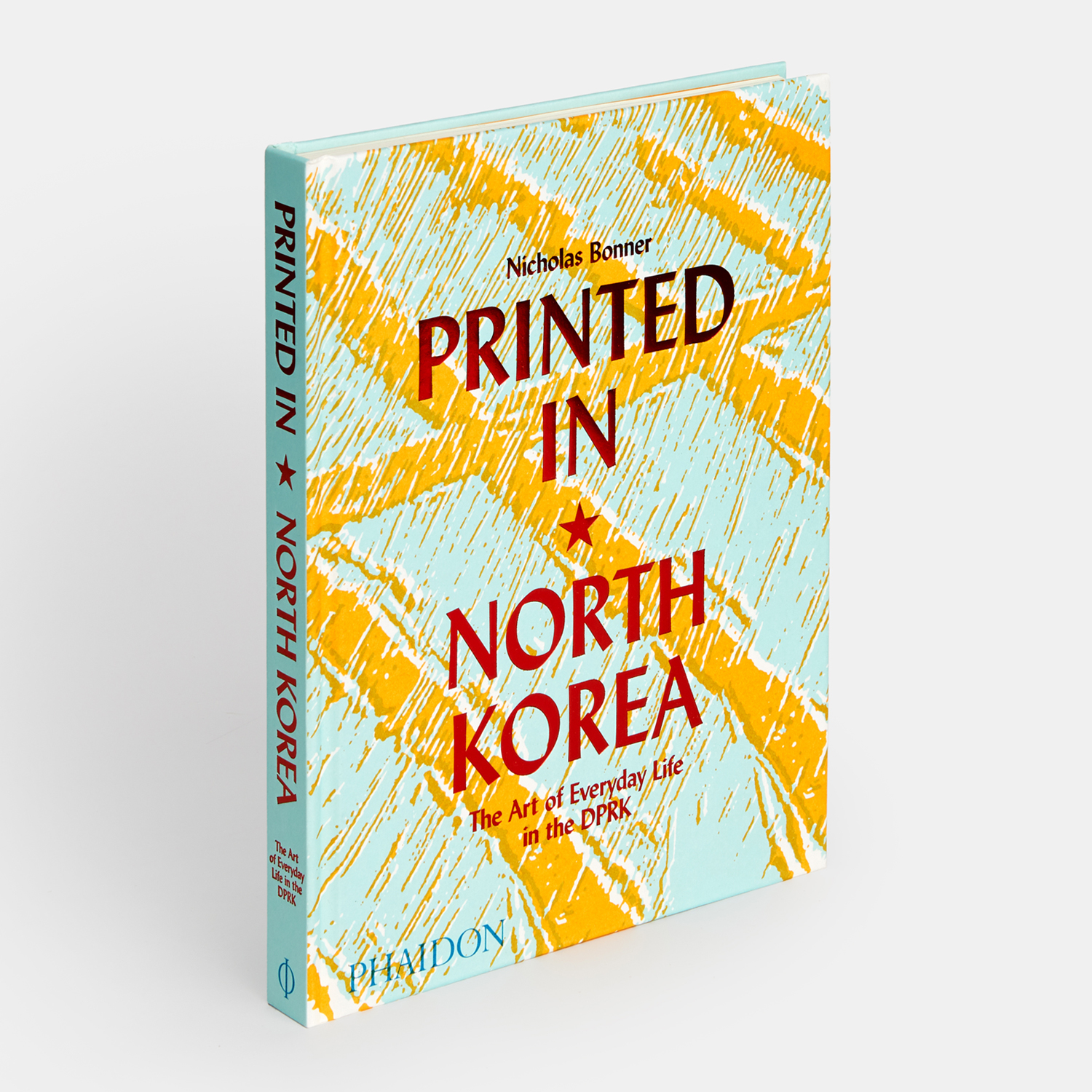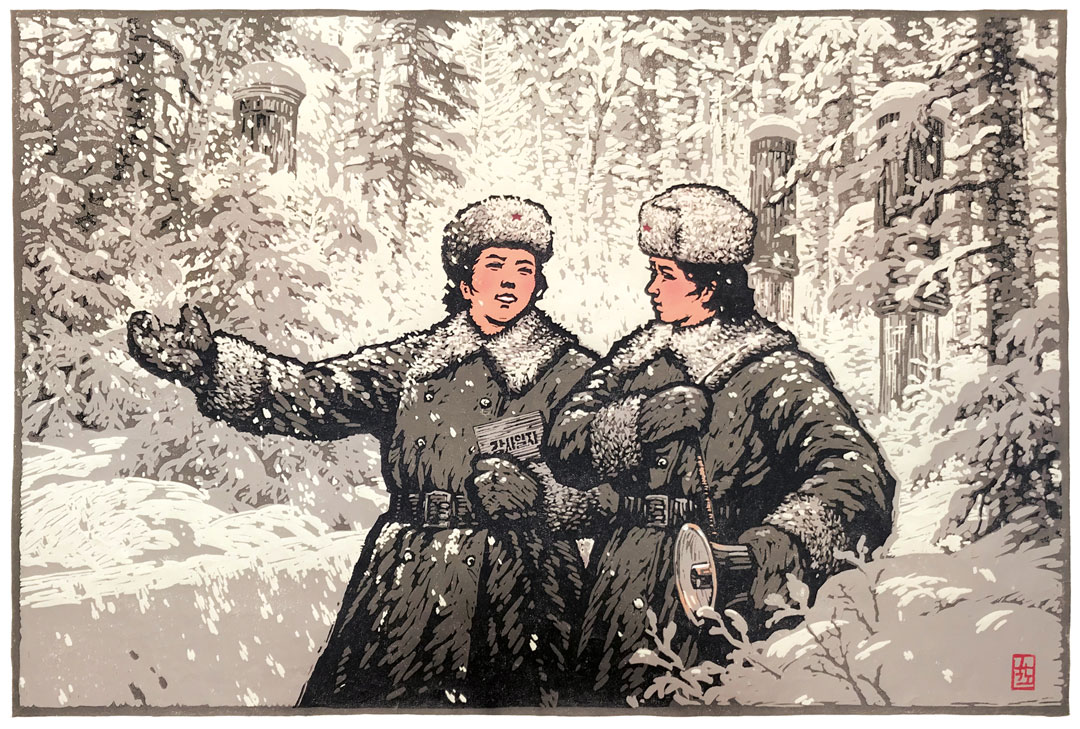
The Korean war may have split the country - but it helped shape its two art scenes
On the anniversary of the armistice, we examine how conflict and military influence changed North and South Korean art
The Korean War’s final shots were fired 67 years ago today, on 27 July 1953. However, as our books on the art and culture of the Korean peninsula explain, that war footing never truly disappeared. “The armistice marked the cessation of hostilities but not the end of the war, resulting in the division of the once sovereign peninsula into South Korea and North Korea,” explains the text in our new book, Korean Art from 1953: Collision, Innovation, Interaction.
North and South Korea remain military foes, extending the region’s period of conflict far beyond that brief hot war, which lasted from 1950 until 1953; and, while much of the Western world is familiar with this mid-century battle, many might not be aware of the country’s earlier invasion.
Our new book goes on to explain that, prior to its division in 1950, Korea “was seized by the Japanese Empire in 1910. When the thirty-five-year Japanese occupation ended in 1945, the Korean peninsula became a stage for Cold War frictions between the superpowers.”
Left-wing totalitarianism triumphed in the North, leading to a highly distinct style of art and design. As the British-born collector and North Korea expert Nicholas Bonner outlines in his book on the country’s distinctive graphic design, packaging and cultural ephemera, Made in North Korea: Graphics From Everyday Life in the DPRK, “there is almost no Western-style advertising in North Korea – and what little exists is habitually referred to as ‘promotion’. Backlit panels that elsewhere push shampoo and carbonated drinks have been used in Pyongyang from 2006 to illuminate propaganda posters – different message, same medium.”
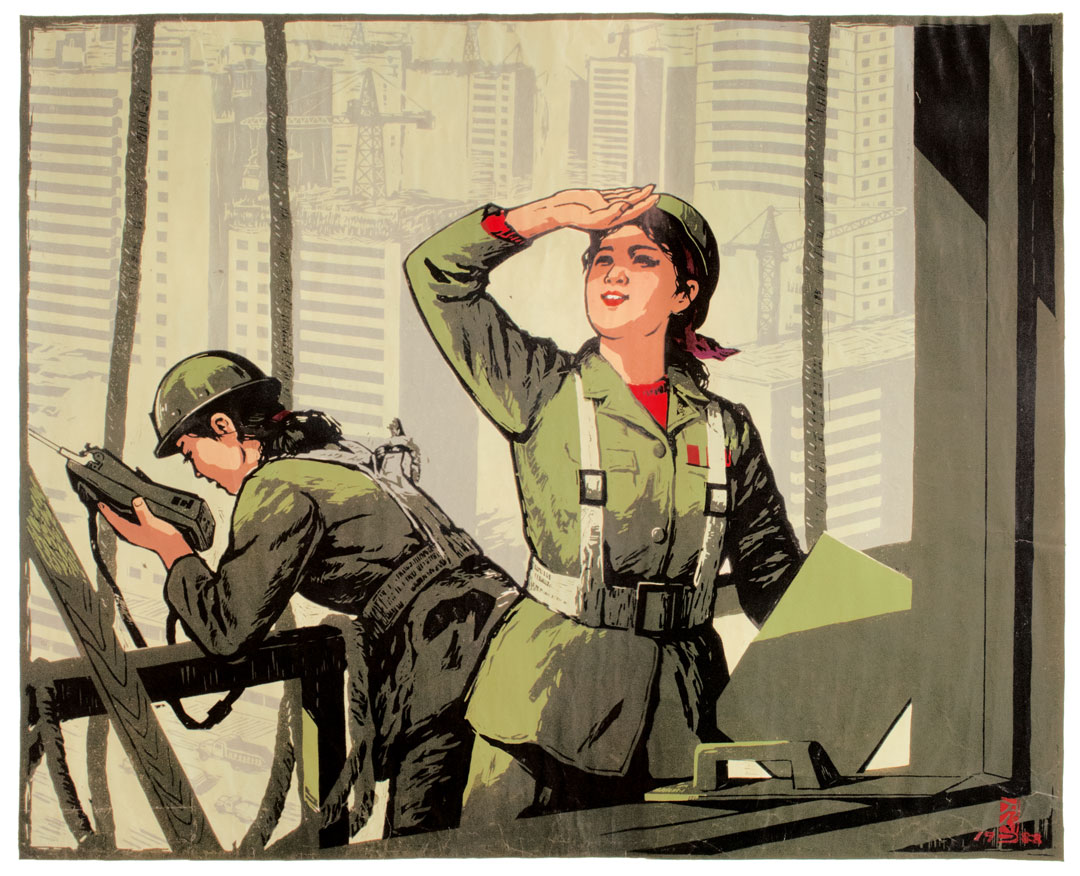
Instead a charming, antique-looking, often hand-rendered style of image making thrives in the North, a country isolated by its dictatorial government, which focusses cultural energies towards its survival. In Bonner’s subsequent book, Printed in North Korea: The Art of Everyday Life in the DPRK, Koen De Ceuster, a lecturer in Korean studies writes that “ North Korea has no qualms about admitting that art and culture are an explicit part of an elaborate propaganda system.”
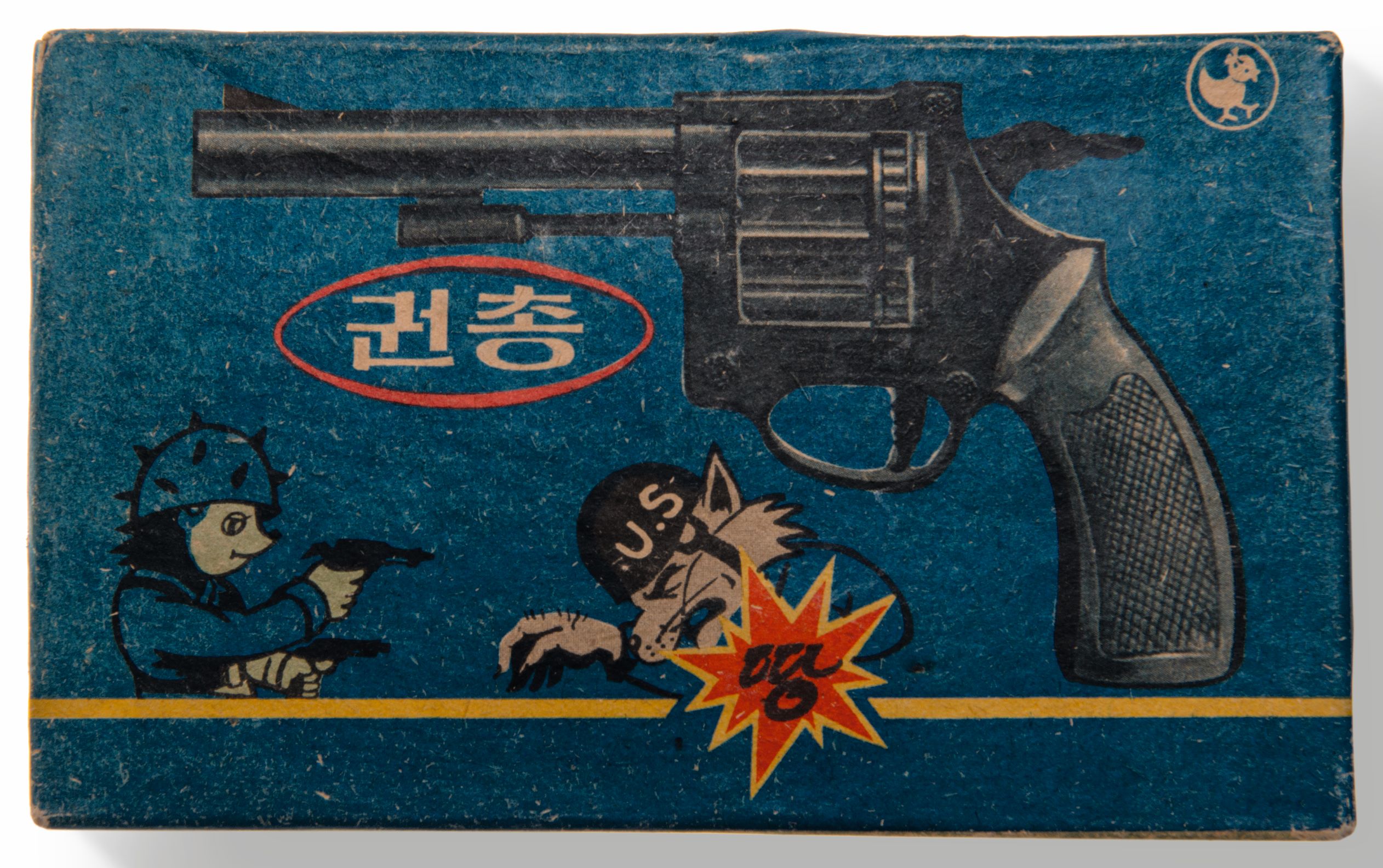
“Rather than the private life or emotions of a single individual, the focus is on the emotional power that stems from the camaraderie among partisan fighters, steelworkers and farmers as they join forces to chase production targets, improve harvest yields or clean up the neighbourhood,” De Ceuster writes.
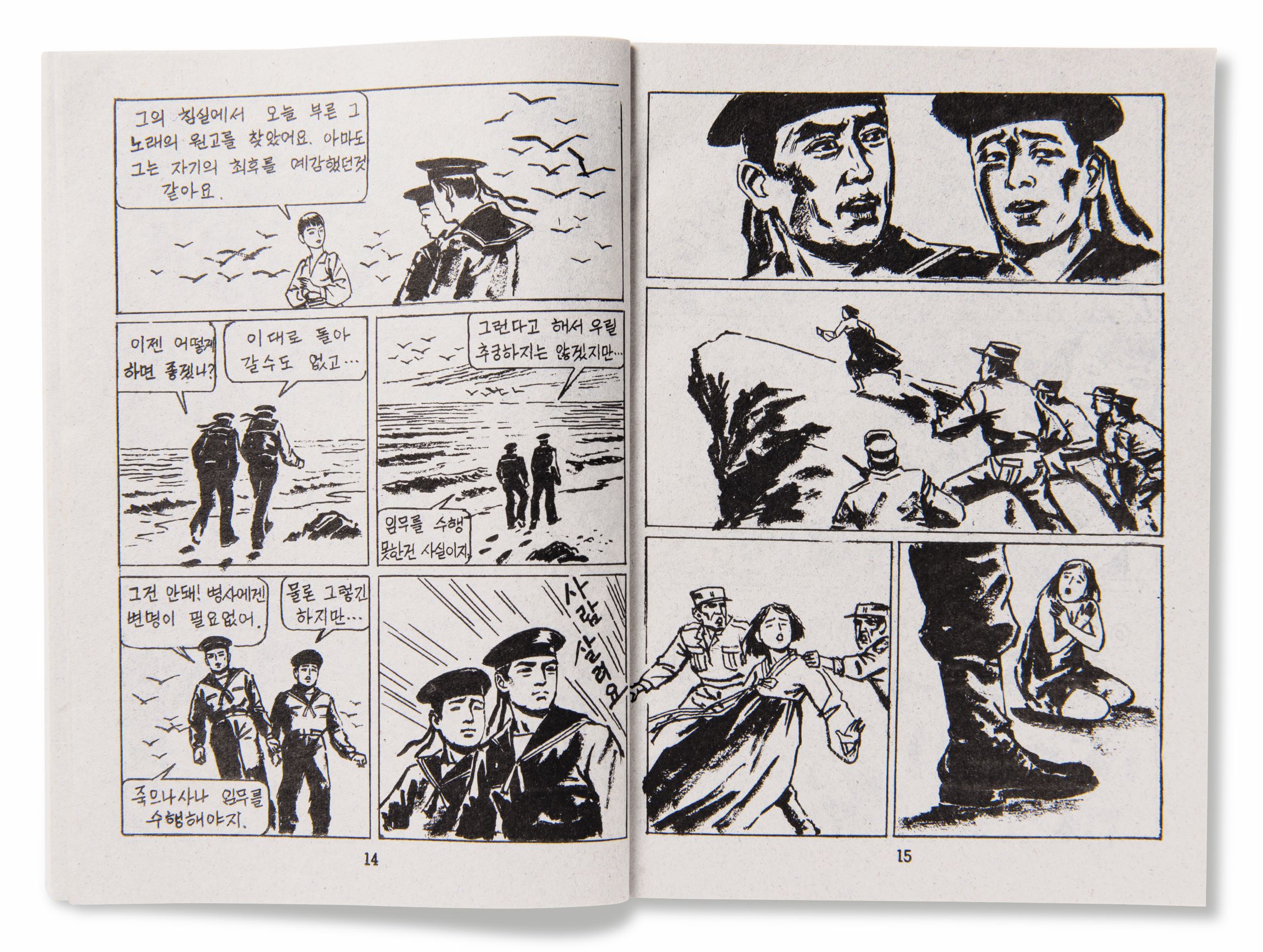
Viewers with even a cursory understanding of art history will appreciate the influence of the Korean War and resultant dictatorship in these images. However, gallery goers might well be less familiar with the way the war and the military more general changed cultural life in the south of the peninsula.
South Korea’s path towards democracy wasn’t straightforward and smooth. The country underwent long periods of anti-communist military military rule from 1961 until 1987, with the government imposing at times, martial law.
Certain aspects of South Korean art responded to this directly, such as the Minjung art or People’s art movement, which, as the book explains, pushed for increased democratization during the 1980s, alongside a more straightforward political campaigning organisation of the same name.
Other, specific artistic projects critiqued ongoing military developments. “In 1968, after an incursion by North Korean guerrillas in the vicinity of the presidential office in Seoul, the South Korean government issued a national photo ID card to all the residents of the country,” explains our new book. “As its name ‘resident registration card’ suggests, the purpose of this card was to register personal information – date of birth, address, military record and fingerprints – for identification purposes and as a way of policing Korean citizens. Without precedent in Organisation for Economic Co-operation and Development (OECD) countries, the wholesale issuance of a registration number to all citizens was perceived as state control.”
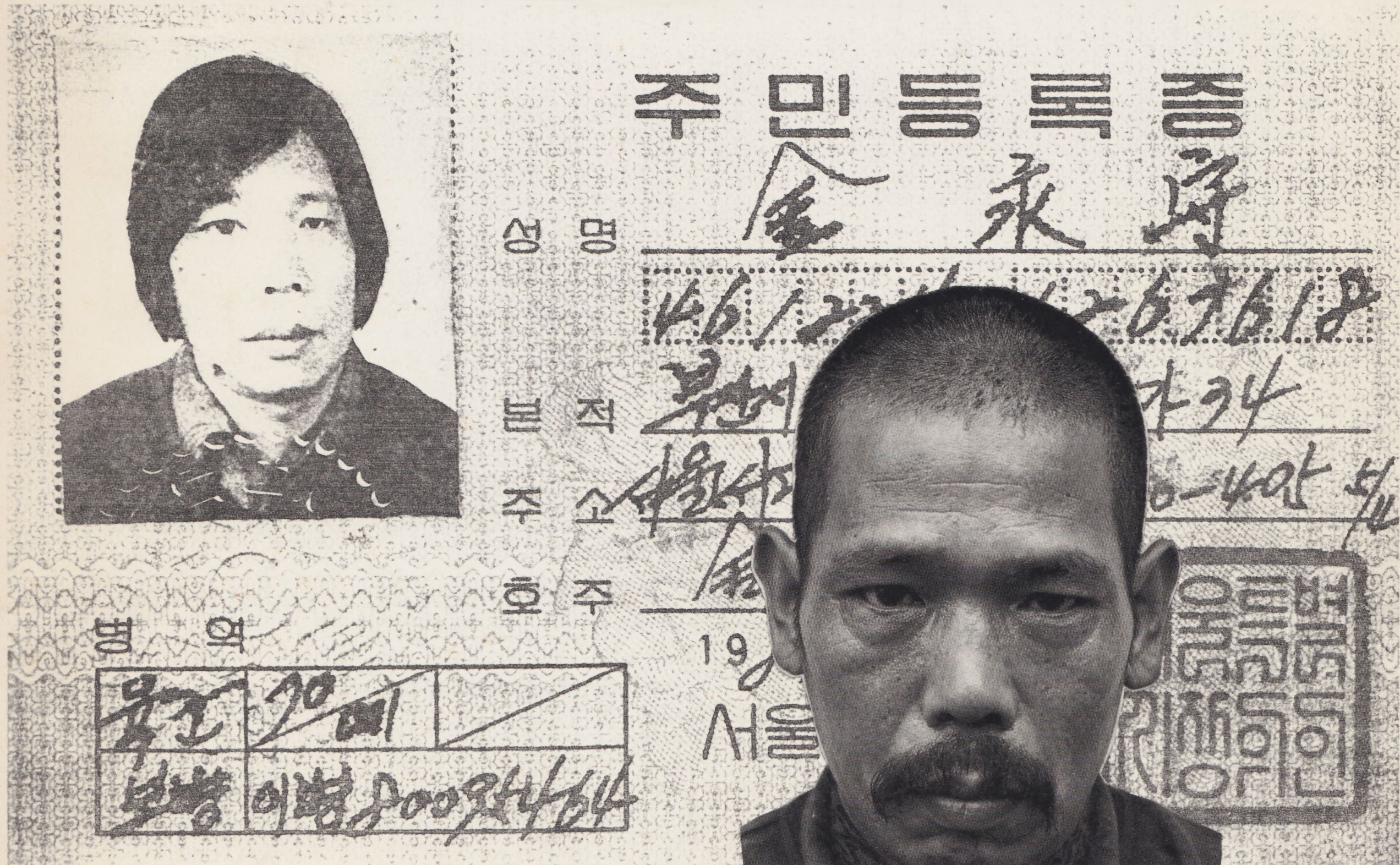
The book goes on to highlight the work of Kim Young Soo, who “photocopied the resident registration cards of his acquaintances, most of whom were artists, replacing their photos with portraits he had taken himself. Kim’s insistence on using high-quality photographic prints, displacing the crude ID image with his carefully produced photographs, turned out to be one of the most successful acts of artistic resistance to the ID card system.”
However, other South Korean artists, now well-known overseas, also draw on the hangover of the war and the power of the military in their homeland. Take for example, Suh Do Ho, the contemporary artist who “started creating fabric replicas of his Seoul and New York homes, having previously produced large-scale installations using elements from military and school uniforms as a way of commenting on the emphasis on collectivism and hierarchy in Korean society,” explains our book.
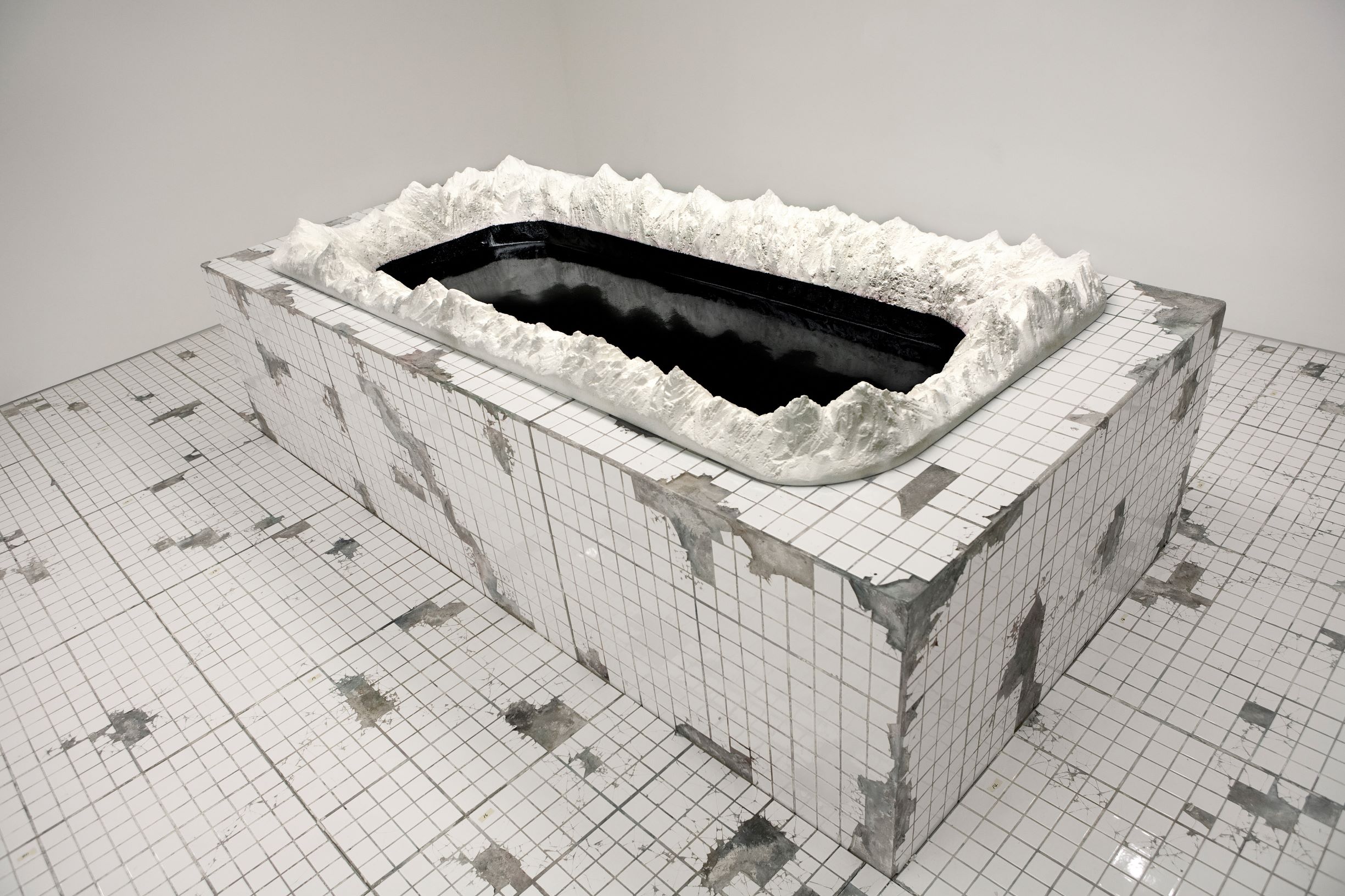
The text highlights an early work of his, Floor, “where a group of 180,000 tightly packed plastic figures support a large sheet of glass, dealt with the political condition of the individual and the multitude. In Floor, viewers can walk on the sheet of glass and so contribute to the oppression of the masses; the work is not only reminiscent of past military dictatorships in recent Korean history but also echoes many political situations all over the world.”
There’s also the 2007 sculpture Heaven and Earth by the South Korean contemporary artist Lee Bul. “ Featuring a giant bathtub filled with black ink, Lee directly addressed the oppressive tactics of the Korean government in the 1980s. In 1987 a university student named Park Jong Chul died from suffocation while being tortured in a bathtub by policemen who were making enquiries about the whereabouts of a campus political leader. Although Park had died on 14 January 1987, the government continued to cover up details surrounding the circumstances of his death for months afterwards.”
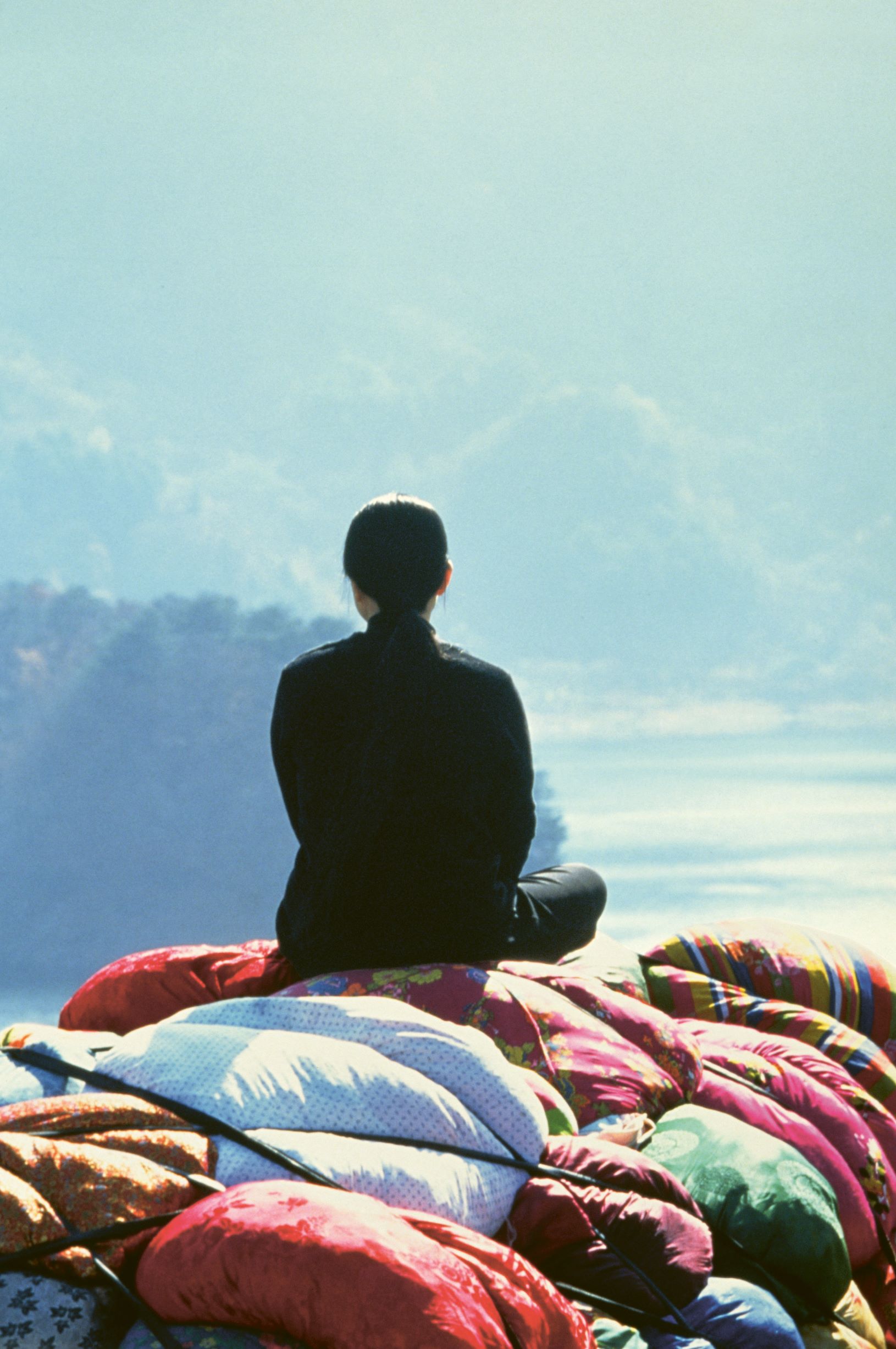
A more lyrical, thoughtful response military life on the peninsula comes from the artist Kimsooja and her performance and video, Cities on the Move – 2727 KM Bottari Truck, “which travelled around various cities in Korea, and was shown at the São Paulo Biennale in 1998 and the Venice Biennale in 1999.” says the book. “ While bottari in Korean means ‘bundles’ or ‘the wrapping of personal belongings’, the word also connotes a ‘departure’ (in the act of packing or wrapping ‘bottari’) and is traditionally associated with female domestic labour and a generational collectivity, passing from grandmother to mother to child.
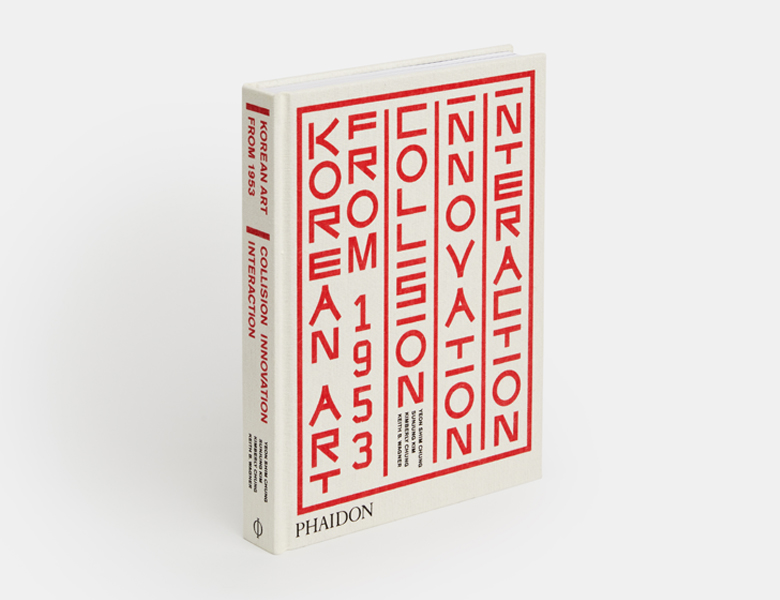
“The sense of departure embedded in bottari refers both to Kim’s own past – her father was a military employee who was posted to various locations over the course of her childhood – and also to her own voluntary migration around the globe. For eleven days and over 2,727 kilometres, the artist rode in the back of a blue truck surrounded by fabric bundles of bottari. Her motionless back was captured in photographs by the well-known Korean photographer Ju Myung Duk, and an accompanying video features a constantly shifting landscape that frames Kimsooja’s dark silhouette and the colourful patchwork of bottari. The packing of bottari means that one is leaving or moving, choosing a new, unpredictable and possibly precarious state.”
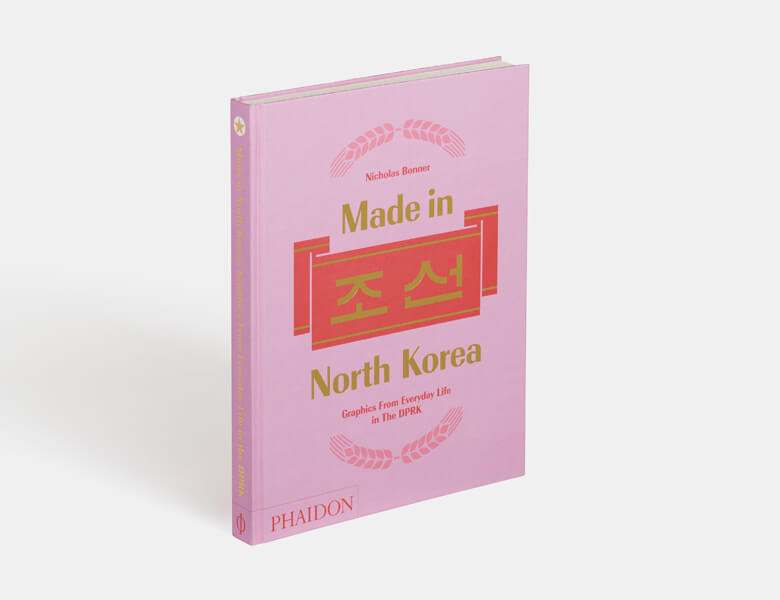
Keen to know more about art on the Peninsula? Then get a copy of Korean Art from 1953: Collision, Innovation, Interaction. Meanwhile, for more on the cultural output of the north, consider Made in North Korea: Graphics From Everyday Life in the DPRK and Printed in North Korea: The Art of Everyday Life in the DPRK.
